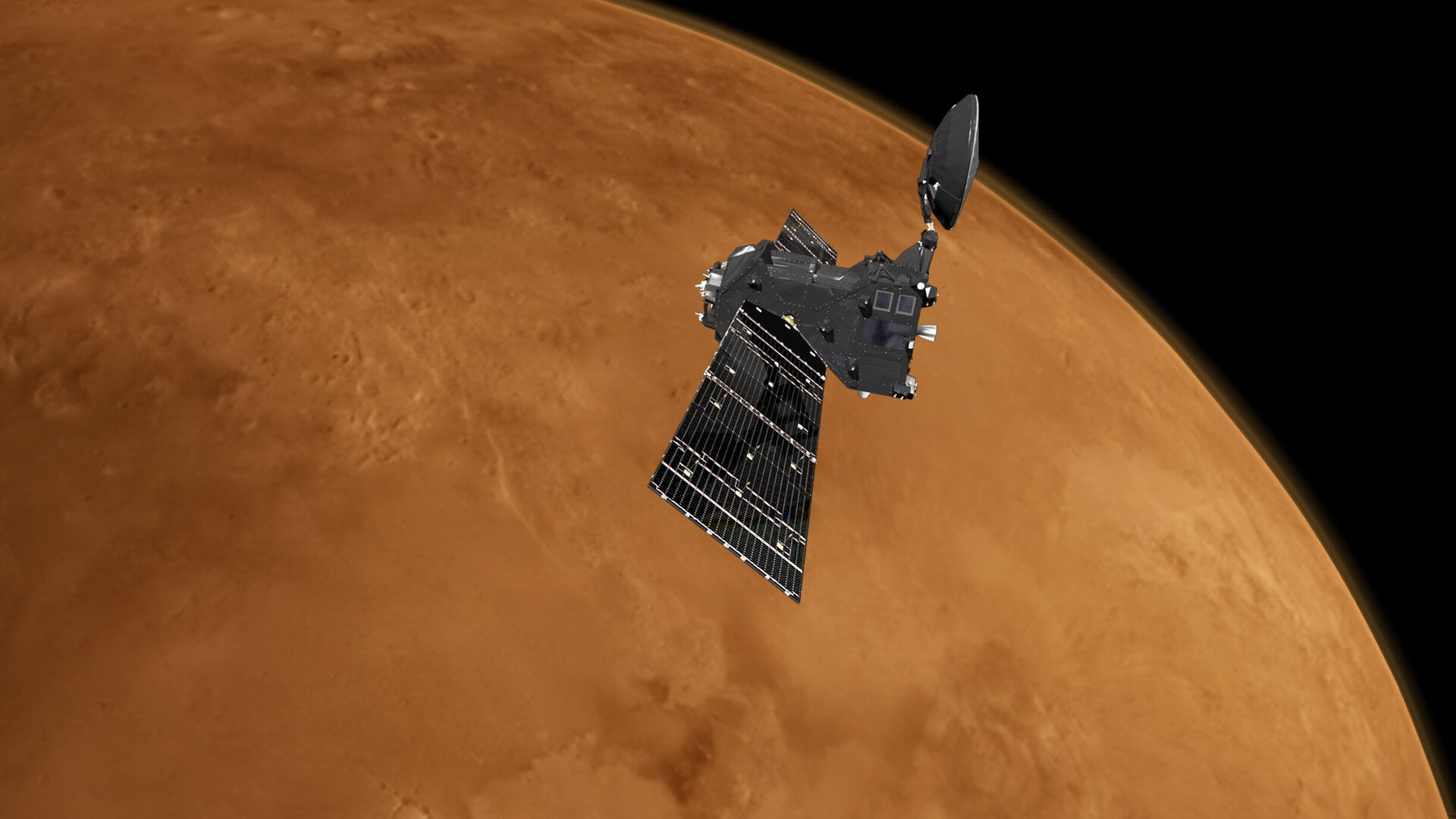Dust devils are a regular occurrence on Mars. Similar to Earth, these short-lived whirlwinds emerge when surface heating occurs, causing changes in air pressure and a vertical column of wind to form. As the column pulls in surrounding air, it becomes a vortex that kicks up dust, which it carries with it across the surface. While Mars has a very thin atmosphere, less than 1% that of Earth's, the lower gravity means that its dust devils grow larger than anything we see here. And according to new research by an international research team, these dust devils will reach velocities that are higher than what we expected.
The research was led by Dr. Valentin Bickel from the Center for Space and Habitability (CSH) at the University of Bern. He was joined by researchers from the University of Bern's Space Research and Planetary Sciences (SRPS), the Centre for Earth, Planetary, Space and Astronomical Research (CEPSAR) at the Open University, the Institute of Planetary Research (IPR) at the German Aerospace Center (DLR). The paper detailing their research and findings was recently published (Oct. 8th, 2025) in the journal Science Advances.
Dust devils and dust storms play an integral part in Mars' atmospheric dynamics and are central to the distribution of dust across the planet's surface. While robotic missions are unable to monitor the winds visually, dust devils are valuable indicators for researchers that allow them to study wind patterns. This is one of the primary science objectives of the European Space Agency's *Mars Express* and *ExoMars Trace Gas Orbiter* (TGO), which has been studying Mars since 2003 and 2016 (respectively).
 *Artist's impression of the ESA's ExoMars Trace Gas Orbiter (TGO) studying the Martian atmosphere. Credit: ESA/ATG medialab*
*Artist's impression of the ESA's ExoMars Trace Gas Orbiter (TGO) studying the Martian atmosphere. Credit: ESA/ATG medialab*
For their research, the team analyzed images taken by the TGO's Colour and Stereo Surface Imaging System (CaSSIS) and the Mars Express' High Resolution Stereo Camera (HRSC) using state-of-the-art machine learning techniques. "Using a state-of-the-art deep learning approach, we were able to identify dust devils in over 50,000 satellite images," Bickel explained in a University of Bern press release. "Our study is therefore based exclusively on data from European Mars exploration."
They then examined stereo images from 300 of the identified dust devils, which they placed in a time sequence to obtain measurements of their movements and velocities. The results showed that the dust devils and winds powering them can reach speeds of up to 44 m/s, or 160 km/h (~145 ft/s, 100 mph), much faster than previously thought. Prior measurements have shown that winds on Mars generally remain below 50 km/h (31 mph), with some rare cases reaching as high as 100 km/h (62 mph). These stronger winds could be responsible for a large part of the dust uplift, which has a major influence on Mars' weather and climate. Said Bickel:
These strong, straight-line winds are very likely to bring a considerable amount of dust into the Martian atmosphere – much more than previously assumed. Our data show where and when the winds on Mars seem to be strong enough to lift dust from the surface. This is the first time that such findings are available on a global scale for a period of around two decades.
By providing valuable data on Mars' atmospheric dynamics, this study could help advance research into a number of fields. This includes the formation of features like dunes and slope streaks, as well as climate models that predict periodic and seasonal changes in weather. This will be especially important when planning future missions to the Red Planet, including crewed missions expected to happen in the coming decades. These models help mission planners to assess the potential risks for equipment and crews and for designers to adapt the technical systems involved.
Said co-author Daniela Tirsch from the Institute of Space Research at the German Aerospace Center (DLR), "A better understanding of the wind conditions on Mars is crucial for the planning and execution of future landed missions. With the help of the new findings on wind dynamics, we can model the Martian atmosphere and the associated surface processes more precisely." The team plans to continue their investigation into dust devils and supplement their findings using coordinated observations by CaSSIS and HRSC, which they hope will make mission planning more efficient.
Further Reading: University of Bern, Science Advances

